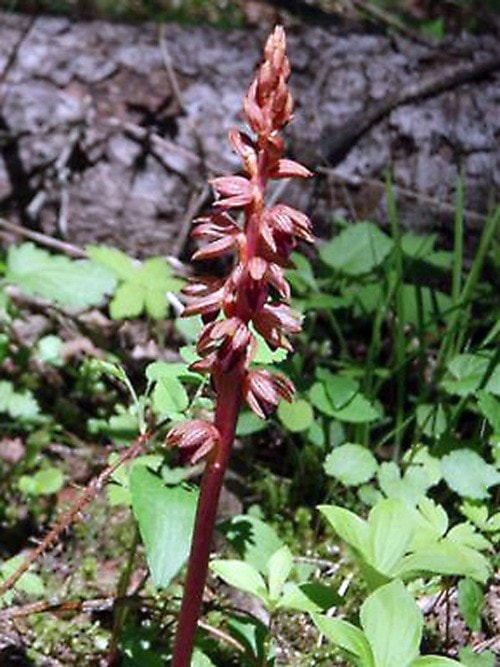With the long, wet spring this has been the year to enjoy lush displays of spring flowers. Clearing of undergrowth for fire suppression has also added a new dimension, providing easier viewing and openings for rays of sunshine (on our good days!)
Searching for wild clematis in North Thompson Provincial Park we found it around the picnic area, and on the wild, steep trail above the Clearwater River. While John and I were in Falkland recently, I went for a stroll along swollen Salmon River, crossed a wooden bridge and found another wonderful display. A small motor home stopped nearby and I told them about it. “Oh, we know this place,” they said. “We come for the rodeo every year and always stop to admire these beautiful blue blossoms.”
It isn’t a competition, but each year friends and I are on the lookout for calypso orchids, carefully scanning the usual spots to find them, then sharing the information with each other. Across the lane from us, school district property has been opened up, so, cranky hip and all, I cannot resist walking through it. Here, unexpectedly, I saw two of those delicate, pink lady slippers. “The yellow lady-slippers are in bloom by Placid Lake,” I’d been told, but getting there was beyond me for this year.
Elsewhere, pink chlorophyll-free striped coralroot orchids tuck into unexpected corners.
One of our group’s favorite places to look for spring flowers is up Road 9, above Raft River Canyon. On our first visit this year, glacier (avalanche) lilies and spring beauties put on a display in yellow and white on a green background beside this immense drop-off. The next time we were up there, the iris, planted in past years, were growing tall, although not yet in bloom. The shooting stars, nature’s gift, were there in all their tiny glory. You have to get down close to those magenta and yellow blossoms to see how appropriate that name is for them.
On a recent trip to view the wild waters of the Kettle on the Clearwater River, we enjoyed seeing tiny white flowers in that damp, noisy atmosphere. Each white, dogwood-like, bunchberry bloom will become a cluster of small red berries; every white, five-petalled queen’s cup will change into a single dark purple berry that none of nature’s creatures eat. Wild ginger succeeds in hiding its flowers so well that it is easy to miss them, especially since the plants flourish under canopied areas and the flowers themselves are dark. By carefully lifting away their shiny, heart-shaped leaves, one is rewarded by the discovery of three chocolate-colored petals, pointed and trailing, open wide to show the light-colored centre of each blossom.
Devil’s club, for all its wicked thorns, is already starting to produce its bright red flowers, the stout stalk that will display them standing tall above the rest. Of course, we also paid homage to The Root, photographed by Pat Sabiston and chosen for Arts Alive several years ago.
John, my husband, is already planning on making Oregon grape jelly! The abundance of yellow flowers on every tiny and large plant suggest to him that a bumper crop of purple grapes cannot be far behind. Saskatoons and the endless number of flowers on wild strawberries add more white blossoms as well as delectable suggestions.
You don’t have to go far to see all of these. Bright-faced Indian paintbrush and columbines are now everywhere along the road’s edges spiced with the scent of wild roses. It may have been a long wet spring - but winter is definitely behind us!
